Search Result
Results for "
Dermatitis
" in MedChemExpress (MCE) Product Catalog:
1
Biochemical Assay Reagents
2
Isotope-Labeled Compounds
| Cat. No. |
Product Name |
Target |
Research Areas |
Chemical Structure |
-
- HY-100009
-
|
Flufenamic acid butyl ester; Butyl flufenamate
|
Others
|
Inflammation/Immunology
|
|
Ufenamate (Flufenamic acid butyl ester) is an anthranilic acid-based anti-inflammatory agent. Ufenamate can be used for the research of skin diseases, such as acute and chronic eczema, contact dermatitis, diaper dermatitis, miliaria and atopic dermatitis .
|
-
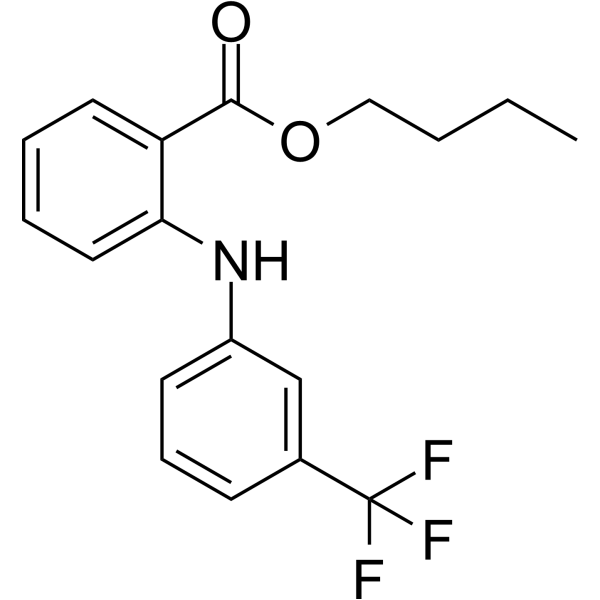
-
- HY-145551
-
|
|
Others
|
Inflammation/Immunology
|
|
Atinvicitinib is a kind of pyrazole compound. Atinvicitinib has the potential for the research of atopic dermatitis (extracted from patent WO2021123094A1) .
|
-
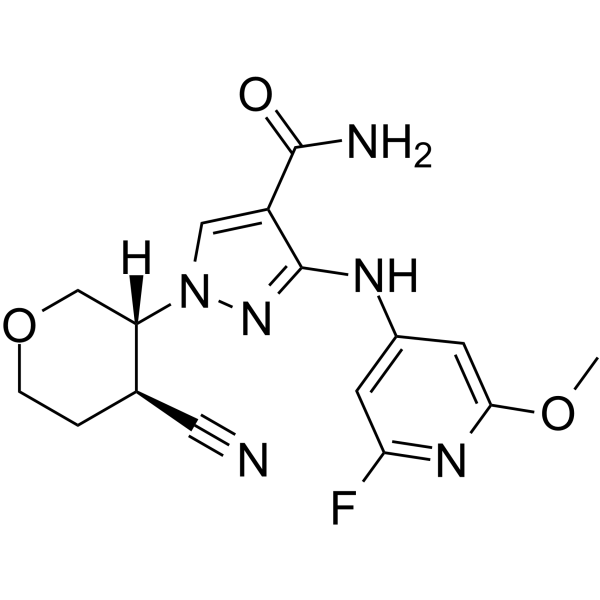
-
- HY-N0508
-
Rosin
1 Publications Verification
|
Others
|
Inflammation/Immunology
|
|
Rosin is isolated from pine wood or pine stumps, Rosin is a frequent contact allergen which induces allergic contact dermatitis .
|
-
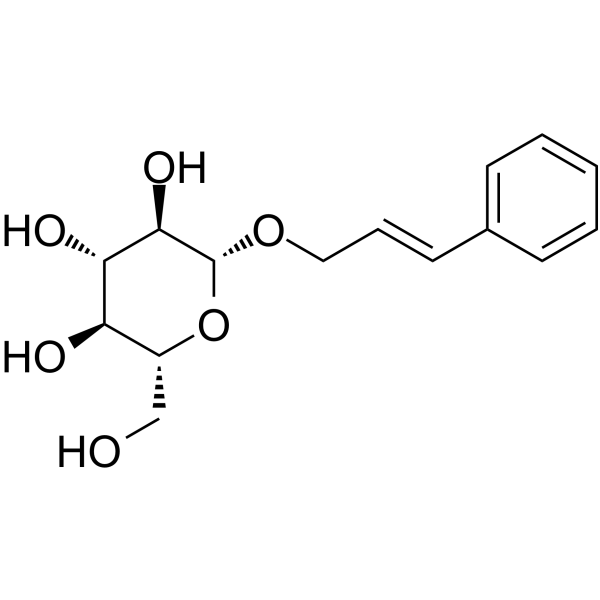
-
- HY-P99301
-
|
Anti-Canine IL31 Recombinant Antibody
|
Interleukin Related
|
Inflammation/Immunology
|
|
Lokivetmab (Anti-Canine IL31 Recombinant Antibody) is an anti-canine IL-31 monoclonal antibody that can be used for the research of atopic dermatitis (AD) in dogs .
|
-
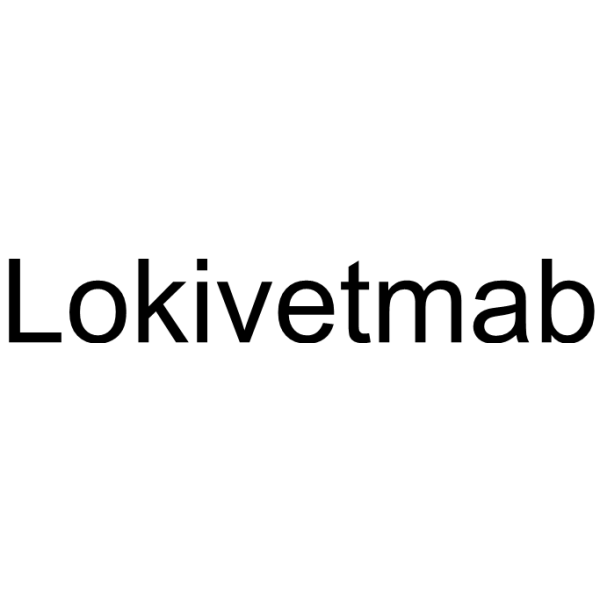
-
- HY-16473
-
|
Aldesulfone disodium
|
Antibiotic
Bacterial
|
Infection
Inflammation/Immunology
|
|
Sulfoxone (Aldesulfone) disodium is an orally active sulphonamide antibiotic that is used against leprosy. Sulfoxone disodium can also be used in study of dermatitis herpetiformis .
|
-
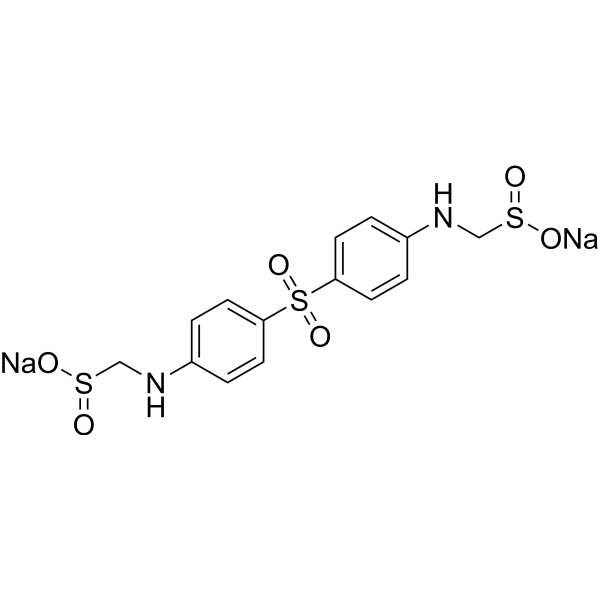
-
- HY-131707
-
|
|
Phosphodiesterase (PDE)
|
Inflammation/Immunology
|
|
LEO 39652 is a dual-soft PDE4 inhibitor with IC50s of 1.2 nM, 1.2 nM, 3.0 nM and 3.8 nM for PDE4A, PDE4B, PDE4C and PDE4D, respectively. LEO 39652 also inhibits TNF-α with an IC50 value of 6.0 nM. LEO 39652 is used for topical research of Atopic dermatitis (AD) .
|
-
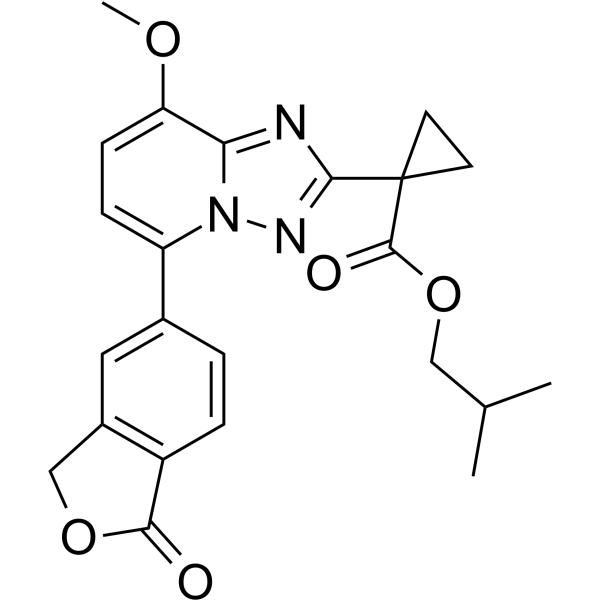
-
- HY-151876
-
|
|
Glucocorticoid Receptor
NF-κB
AP-1
|
Inflammation/Immunology
|
|
Glucocorticoid receptor modulator 1 is a highly potent and orally active non-steroidal selective glucocorticoid receptor modulator with an IC50 value of 9 nM and 130 nM for NF-κB and AP-1, respectively. Glucocorticoid receptor modulator 1 can effectively reduce the expression of inflammatory factors IL-6, IL-1β, TNF-α, also can relieve dermatitis in mice .
|
-

-
- HY-P99053
-
|
|
Interleukin Related
|
Inflammation/Immunology
|
|
Tralokinumab, a fully human IgG4 monoclonal antibody, specifically binds with high affinity to IL-13 alone, preventing its interaction with the receptor and subsequent downstream signalling. Tralokinumab can be used for the research of the atopic dermatitis (AD) .
|
-

-
- HY-P99162
-
|
CIM331
|
Interleukin Related
|
Inflammation/Immunology
|
|
Nemolizumab (CIM331) is a humanized antihuman interleukin-31 receptor A monoclonal antibody that inhibits the binding of interleukin-31 (IL-31) to its receptor and subsequent signal transduction. Nemolizumab can used be in research of atopic dermatitis (AD) .
|
-

-
- HY-B1616
-
|
|
Glucocorticoid Receptor
|
Inflammation/Immunology
|
|
Clobetasone butyrate is a synthetic glucocorticoid and has topical anti-inflammatory activity especially in skin. Clobetasone butyrate can be used to relieve corticosteroid-responsive dermatoses, including atopic dermatitis and psoriasis .
|
-
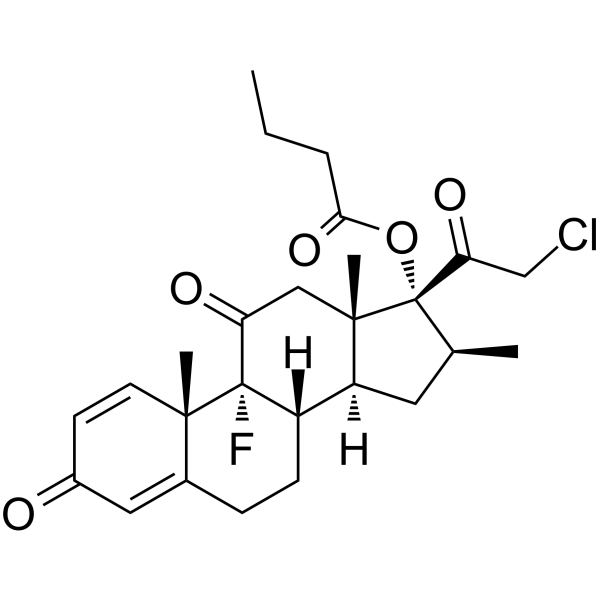
-
- HY-148074
-
|
RPT193
|
CCR
|
Inflammation/Immunology
|
|
Zelnecirnon (RPT193) is an orally active inhibitor of CCR4, blocks the recruitment of Th2 inflammatory immune cells into inflamed tissues. Zelnecirnon can be used for allergic inflammation in atopic dermatitis, asthma, and other diseases research .
|
-
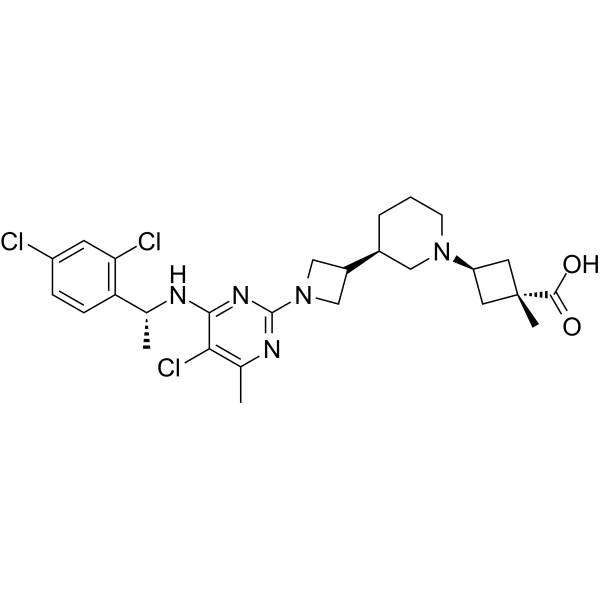
-
- HY-109085
-
|
OPA-15406
|
Phosphodiesterase (PDE)
|
Inflammation/Immunology
|
|
Difamilast (OPA-15406) is a topical, selective and nonsteroidal phosphodiesterase-4 (PDE4) inhibitor with particularly efficient inhibition of subtype B (IC50=11.2 nM). Difamilast can be used for the research of mild to moderate atopic dermatitis (AD) .
|
-
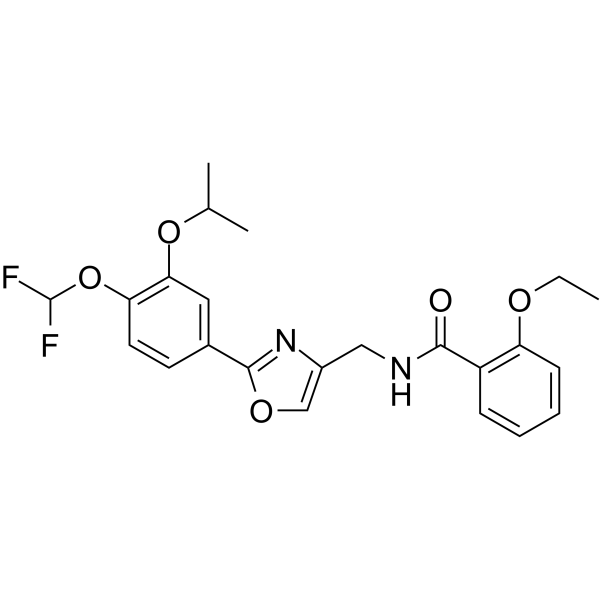
-
- HY-153565
-
|
|
Others
|
Inflammation/Immunology
|
|
Immune cell migration-IN-1 (compound 2) is a potent agent to inhibit immune cell migration. Immune cell migration-IN-1 can be used for research in alleviating dry eye diseases, eczema dermatitis and psoriasis .
|
-
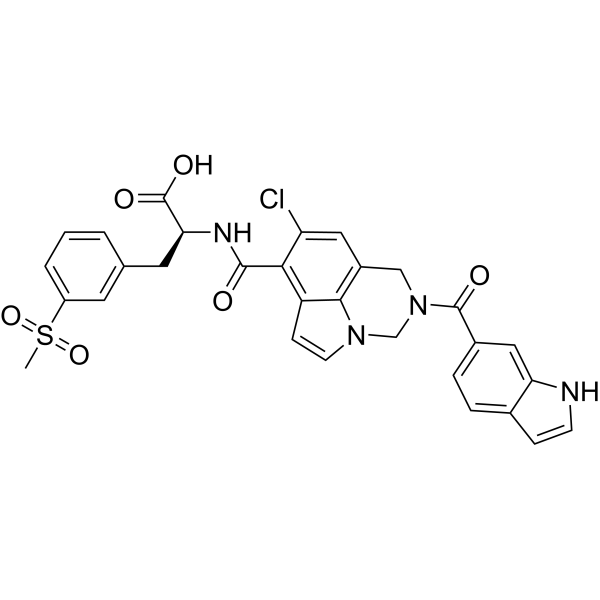
-
- HY-P1722
-
|
|
Neurokinin Receptor
|
Inflammation/Immunology
|
|
Spantide II, an undecapeptide substance P (SP) analog, is a potent neurokinin-1 receptor (NK-1R) antagonist. Spantide II binds with NK-1R and blocks proinflammatory activities associated with SP. Spantide II can be used in the research of inflammatory skin disorders, such as psoriasis and contact dermatitis .
|
-
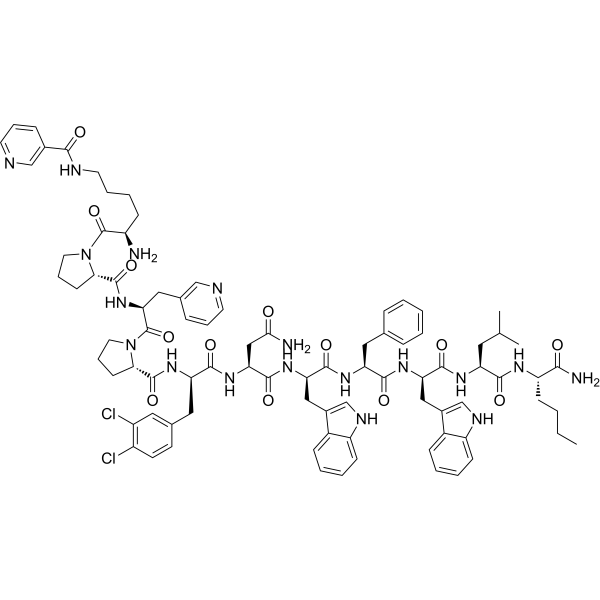
-
- HY-P99519
-
|
KPL-716
|
Interleukin Related
|
Inflammation/Immunology
|
|
Vixarelimab (KPL-716) is a human anti-oncostatin M (OSM) monoclonal antibody that binds to the beta chain of the OSM receptor and inhibits IL-31 and OSM signalling. Vixarelimab can be used in studies of inflammatory skin diseases such as atopic dermatitis and itchy nodular rash .
|
-

-
- HY-13723A
-
|
SDZ-ASM 981 hydrate
|
Phosphatase
|
Inflammation/Immunology
|
|
Pimecrolimus hydrate (SDZ-ASM 981 hydrate) is a potent, nonsteroid and orally active calcineurin inhibitor. Pimecrolimus hydrate shows anti-inflammatory activity. Pimecrolimus hydrate has the potential for the research of atopic dermatitis and oral erosive lichen planus .
|
-
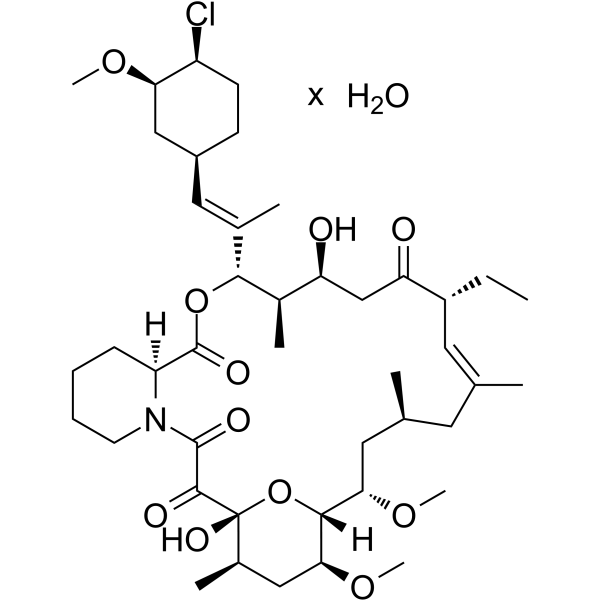
-
- HY-106714
-
|
|
Drug Metabolite
|
Inflammation/Immunology
|
|
Clocortolone pivalate is a synthetic glucocorticoid corticosteroid and corticosteroid ester. Clocortolone pivalate is indicated for seborrheic dermatitis, contact dermatitis, atopic dermatitis and psoriasis .
|
-

-
- HY-B0688
-
|
4,4′-Diaminodiphenyl sulfone; DDS
|
Antibiotic
Parasite
Bacterial
Reactive Oxygen Species
|
Infection
Inflammation/Immunology
|
|
Dapsone (4,4′-Diaminodiphenyl sulfone) is an orally active and blood-brain penetrant sulfonamide antibiotic with bacteriostatic, antimycobacterial and antiprotozoal activities . Dapsone exerts effective antileprosy activity and inhibits folate synthesis in cell extracts of M. leprae. Dapsone is used for dermatologic disorder research, including leprosy, dermatitis herpetiformis, acne vulgaris et al .
|
-
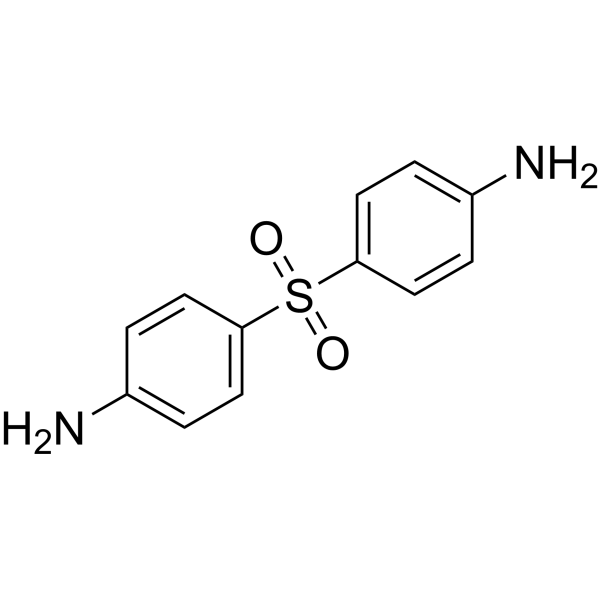
-
- HY-B0328
-
-
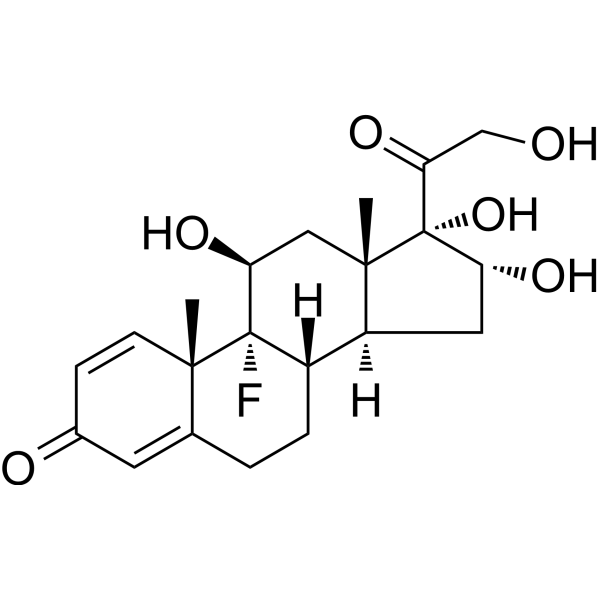
-
- HY-B1387
-
-
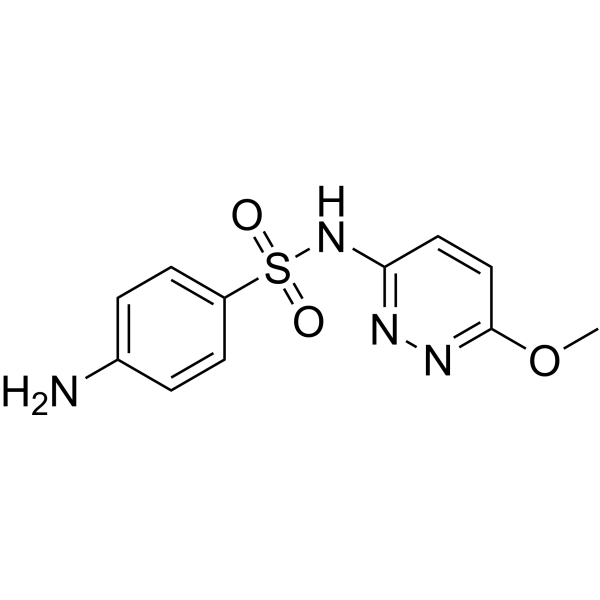
-
- HY-A0150
-
|
7a-Chloro-16a-methyl prednisolone
|
|
|
|
Alclometasone (7a-Chloro-16a-methyl prednisolone) is a glucocorticoid and inhibits the release of pro-inflammatory mediators from leukocytes. Alclometasone can be used to relieve corticosteroid-responsive dermatoses, including atopic dermatitis, eczema, psoriasis and allergic dermatitis .
|
-
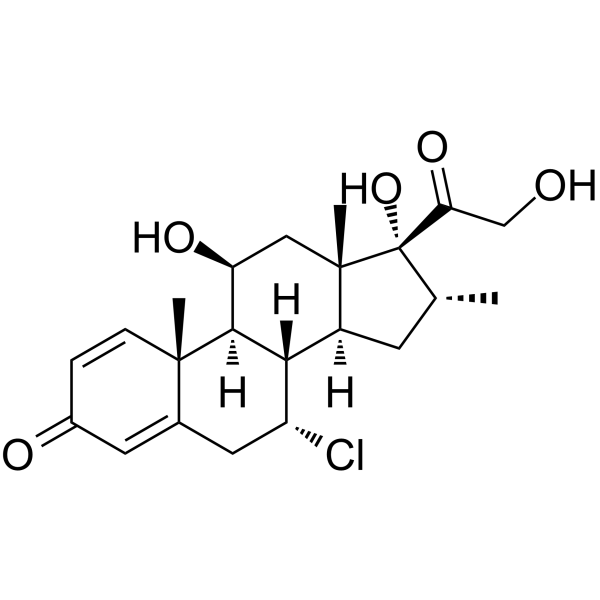
-
- HY-145351
-
-
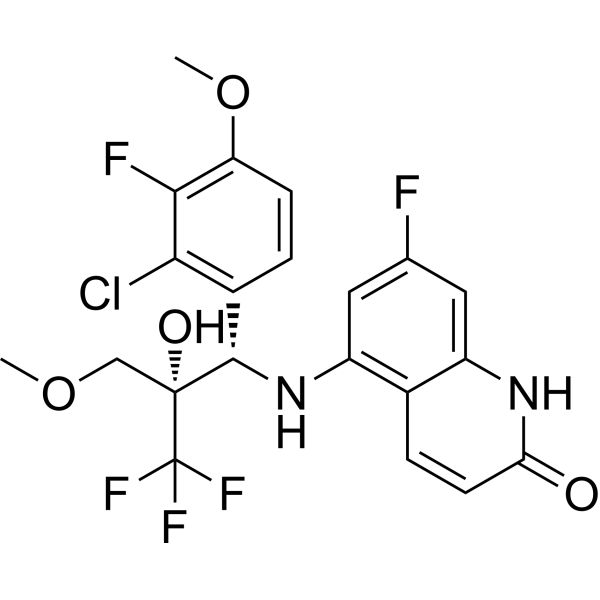
-
- HY-B1365
-
|
|
|
|
|
Prednicarbate is a topical corticosteroid agent. Prednicarbate can be used for the research of inflammatory skin diseases, such as atopic dermatitis .
|
-
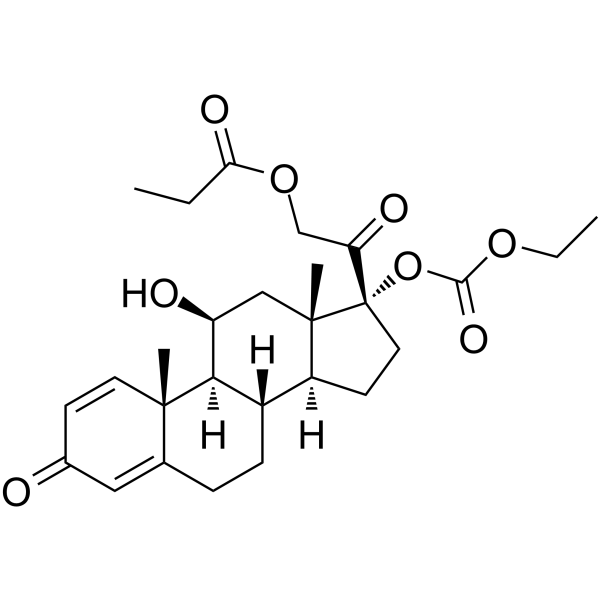
-
- HY-18706
-
-
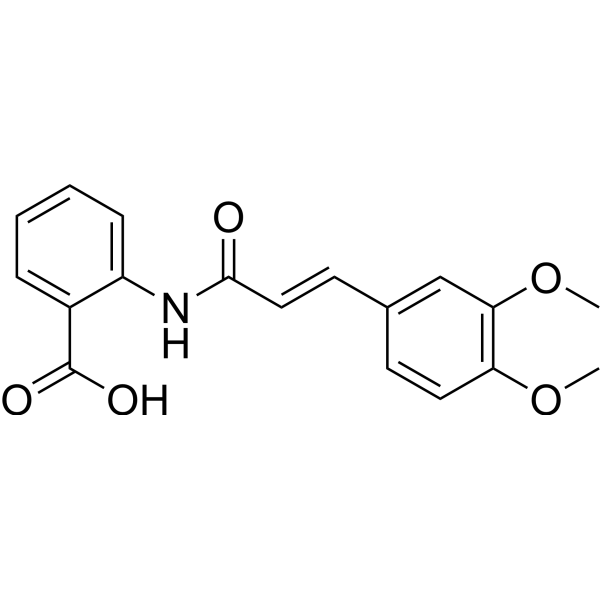
-
- HY-106566
-
|
Sch 22219
|
Others
|
Inflammation/Immunology
|
|
Alclometasone dipropionate (Sch 22219) is a steroid compound. Alclometasone dipropionate can be used for the research of dermatitis and skin itch .
|
-
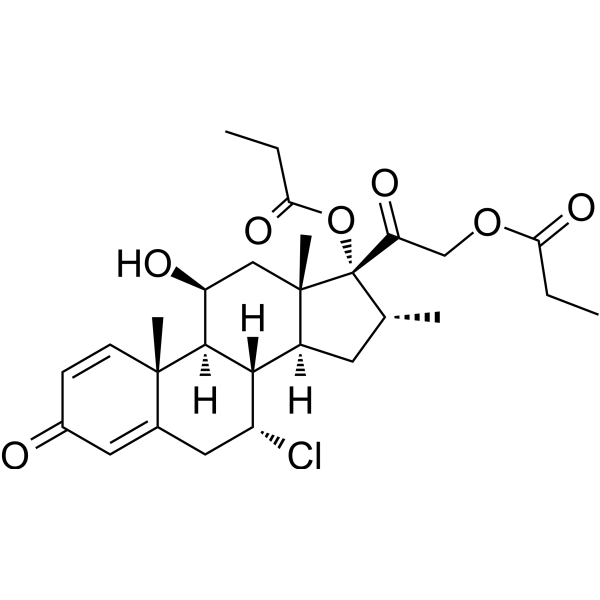
-
- HY-N0184A
-
-
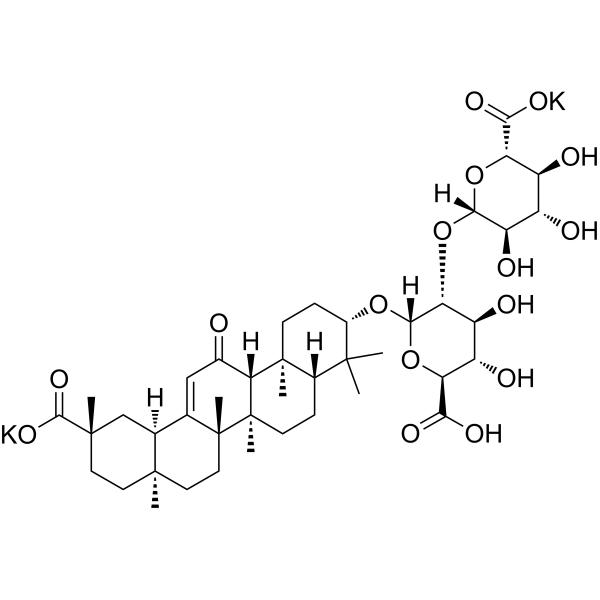
-
- HY-P99018
-
|
Antibody ANB 020
|
Interleukin Related
|
Cancer
|
|
Etokimab (Antibody ANB 020) is a humanized monoclonal antibody that targets IL-33. Etokimab can be used for the research of atopic dermatitis .
|
-
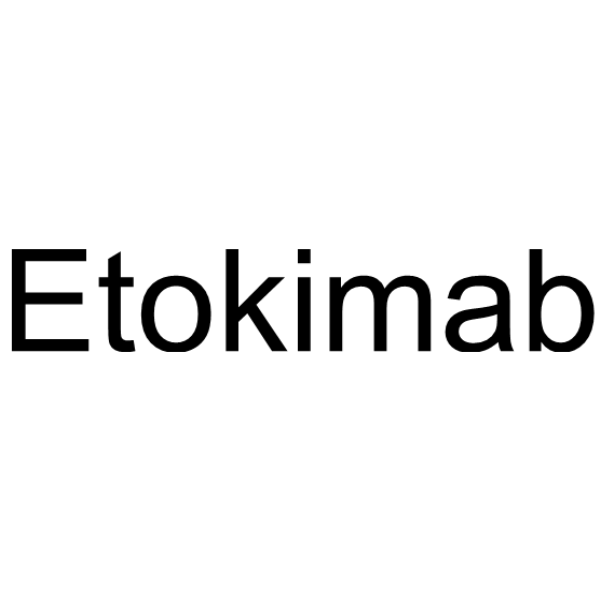
-
- HY-156621
-
|
|
JAK
|
Inflammation/Immunology
|
|
Lepzacitinib is a Janus kinase inhibitor targeting to JAK 1/3. Lepzacitinib exhibits anti-inflammatory effect and inhibits atopic dermatitis and other skin diseases .
|
-
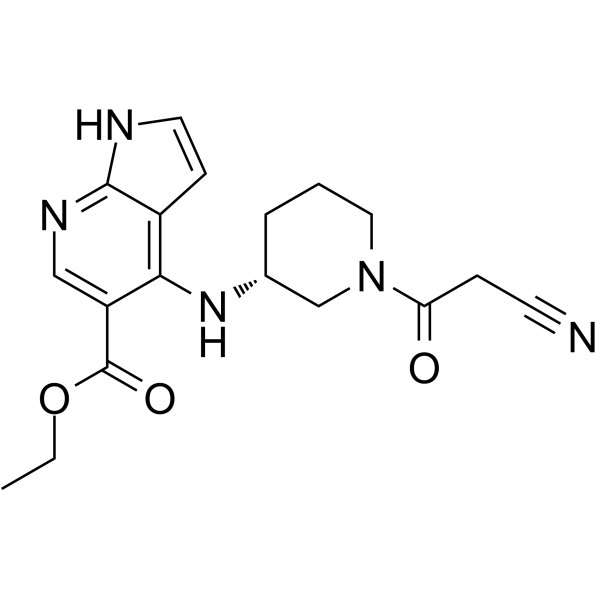
-
- HY-130313
-
|
|
Amino Acid Derivatives
|
Inflammation/Immunology
|
|
Sodium lauroyl glutamate is an anionic amino acid surfactant. Sodium lauroyl glutamate has the irritant contact dermatitis potential, and possible anti-irritating potential in a surfactant mixture on human skin .
|
-
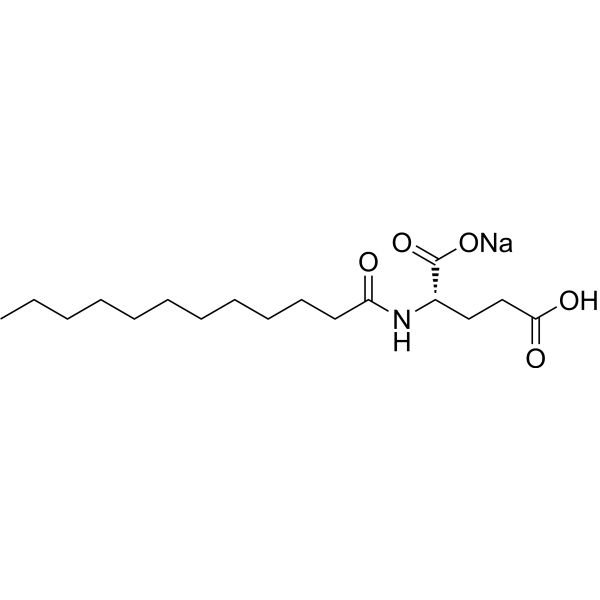
-
- HY-B0894
-
|
Acetylresorcinol; Resorcin monoacetate
|
Biochemical Assay Reagents
|
Inflammation/Immunology
|
|
Resorcinol monoacetate (Acetylresorcinol) is an antiseptic and a disinfectant, is a chemical intermediate for the production of many other pharmaceuticals, and has the potential for acne, seborrheic dermatitis, eczema, psoriasis, and other skin disorders research.
|
-
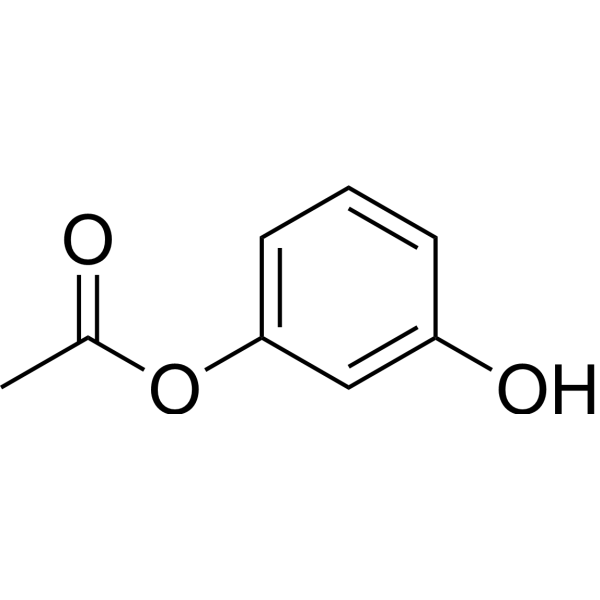
-
- HY-N3312
-
|
|
Endogenous Metabolite
|
Infection
|
|
Matairesinol confers anti-allergic effects in an allergic dermatitis mouse model. DfE-induced changes in IL-4 and IFN-γ mRNA expression in the ears of NC/Nga mice were reversed by matairesinol application .
|
-

-
- HY-B0295
-
|
|
Bacterial
Antibiotic
Parasite
|
Infection
|
|
Chloroxine is one of the important 8-hydroxyquinoline derivative. Chloroxine has effective antibacterial, antifungal, antiprotozoal and antiamoebic activities, especially used in treating the intestinal amebiasis. Chloroxine is also used in the treatment of dandruff and seborrheic dermatitis of the scalp .
|
-
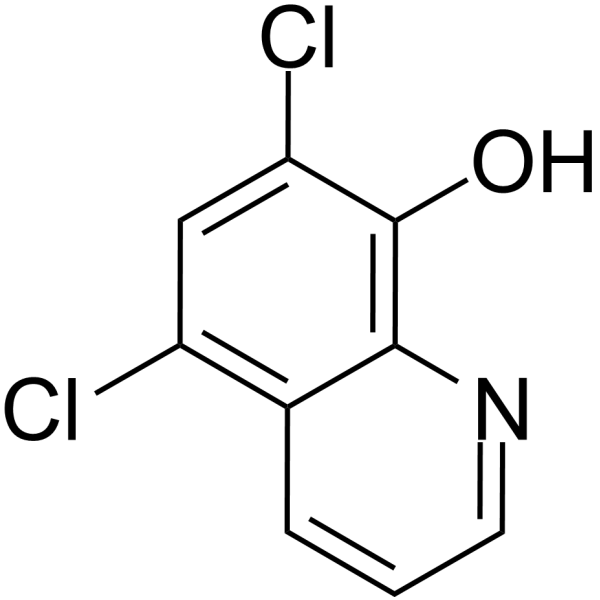
-
- HY-P9926
-
|
REGN-668; SAR-231893
|
Interleukin Related
|
Inflammation/Immunology
Cancer
|
|
Dupilumab (REGN-668) is a fully human mAb to IL-4 receptor α (IL-4Rα) that inhibits both IL-4 and IL-13 signaling, markedly improved moderate-to-severe atopic dermatitis .
|
-

-
- HY-B0725A
-
|
|
|
|
|
Doxepin inhibits reuptake of serotonin and norepinephrine as a tricyclic antidepressant. Doxepin has therapeutic effects in atopic dermatitis,chronic urticarial,can improve cognitive processes, protect central nervous system. Doxepin has also been proposed as a protective factor against oxidative stress .
|
-
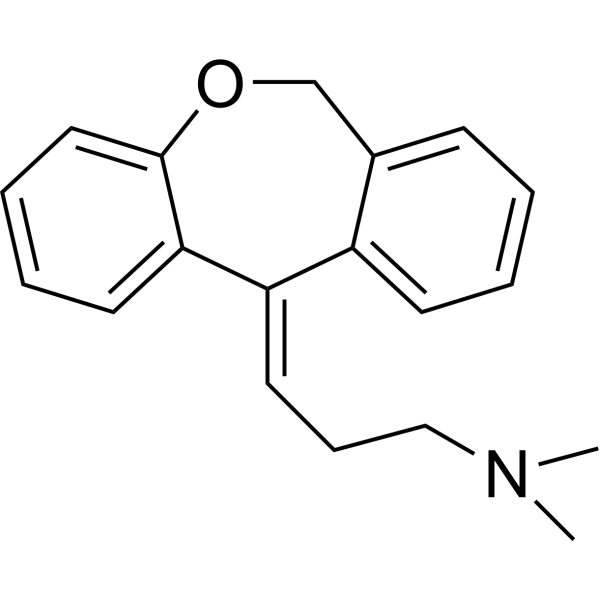
-
- HY-P99673
-
|
REGN-3500; SAR-440340
|
Interleukin Related
NF-κB
|
Inflammation/Immunology
|
|
Itepekimab (REGN-3500) is an IgG4 monoclonal antibody against IL-33. Itepekimab reduced airway inflammation and related tissue damage in preliminary clinical studies. Itepekimab has potential effects in asthma, chronic obstructive pulmonary disease (COPD), and atopic dermatitis (AD) .
|
-

-
- HY-131868
-
|
|
TRP Channel
|
Neurological Disease
|
|
TRPV3 antagonist 74a is a potent and selective TRPV3 antagonist. TRPV3 antagonist 74a displays no significant activity against a panel of other ion channels. TRPV3 antagonist 74a can be used for the research of neuropathic pain .
|
-
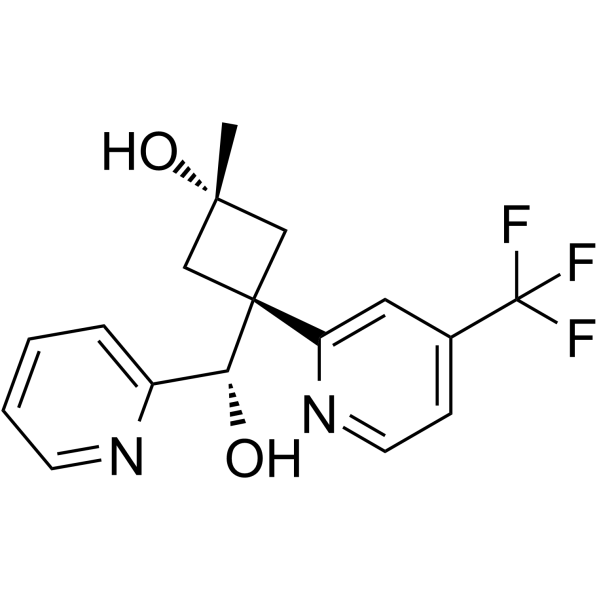
-
- HY-B0636
-
|
|
Glucocorticoid Receptor
FGFR
|
Inflammation/Immunology
Endocrinology
Cancer
|
|
Triamcinolone acetonide inhibits basic fibroblast growth factor (bFGF) induced proliferation of retinal endothelial cells. Triamcinolone acetonide reduces chondrocyte viability and leads to cartilage destruction. Triamcinolone acetonide activates macrophage with anti-inflammatory characteristics. Triamcinolone acetonide can be used in the study of diseases such as atopic dermatitis .
|
-
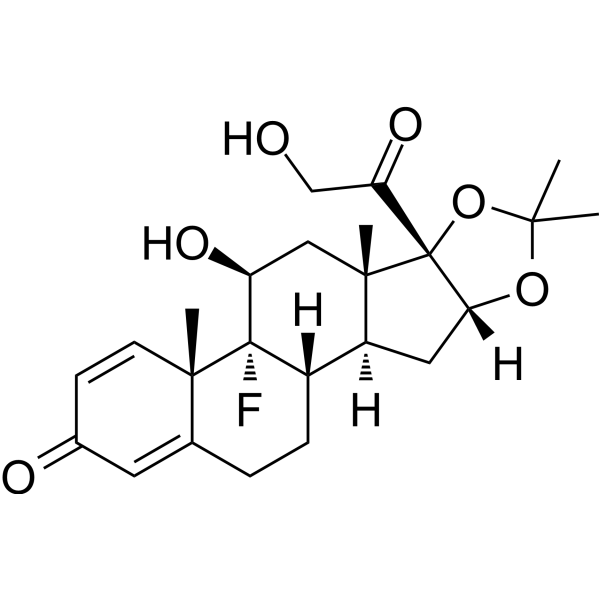
-
- HY-13516
-
|
|
Apoptosis
Autophagy
Filovirus
HIV
|
Infection
Inflammation/Immunology
Cancer
|
|
Aloperine is an alkaloid in sophora plants such as Sophora alopecuroides L, which has shown anti-cancer, anti-inflammatory and anti-virus properties .
Aloperine is widely used to treat patients with allergic contact dermatitis eczema and other skin inflammation in China . Aloperine induces apoptosis and autophagy in HL-60 cells .
|
-
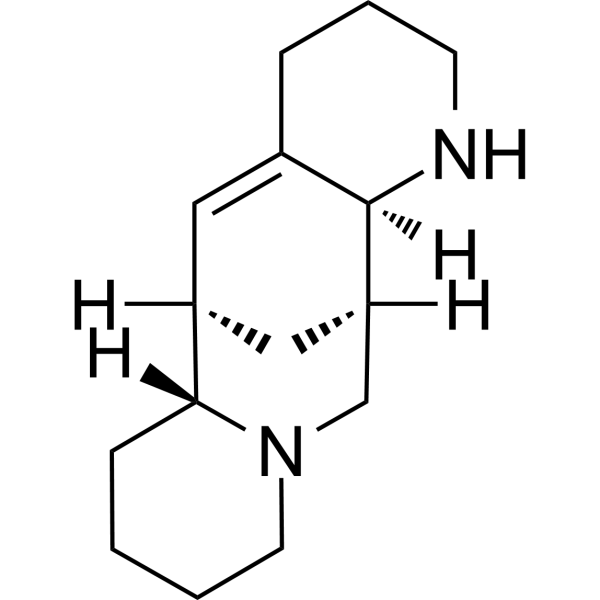
-
- HY-N4042
-
|
|
PI3K
ERK
|
Inflammation/Immunology
Cancer
|
|
Hirsutenone is an active botanical diarylheptanoid present in Alnus species and exhibits many biological activities, including anti-inflammatory, anti-tumor promoting and anti-atopic dermatitis effects. Hirsutenone attenuates adipogenesis by binding directly to PI3K and ERK1 in a non-ATP competitive manner. Hirsutenone can be used for the study of obesity .
|
-

-
- HY-N7087
-
|
α-Methylene butyrolactone
|
Drug Metabolite
|
|
|
Tulipalin A (α-Methylene butyrolactone) is a glycoside. Tulipalin A is a causative allergen that induces Allergic contact dermatitides . Tulipalin A (α-Methylene butyrolactone) at low dose affects the functionality of immune cells, such as Jurkat T cells .
|
-
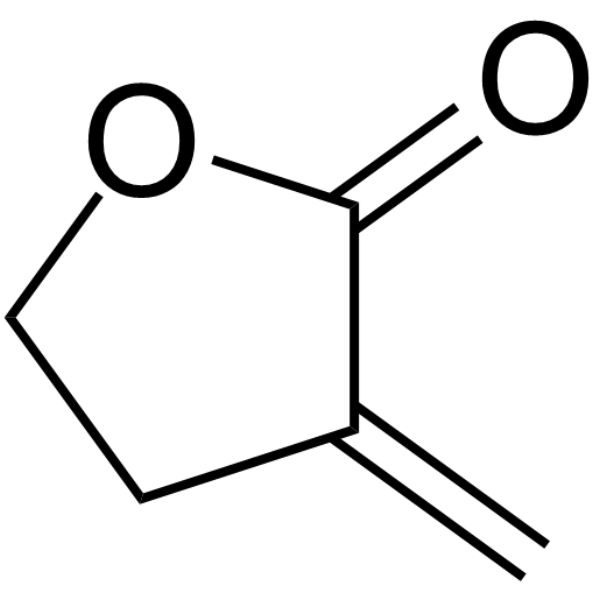
-
- HY-103025
-
|
ZK 91588; MPA
|
Glucocorticoid Receptor
|
Inflammation/Immunology
|
|
Methylprednisolone aceponate (ZK 91588) is a glucocorticoid and anti-inflammatory agent with weak systemic effects. Methylprednisolone aceponate is a selective glucocorticoid receptor Ligand.Methylprednisolone aceponate can be used for research of eczema and other inflammatory skin disorders .
|
-
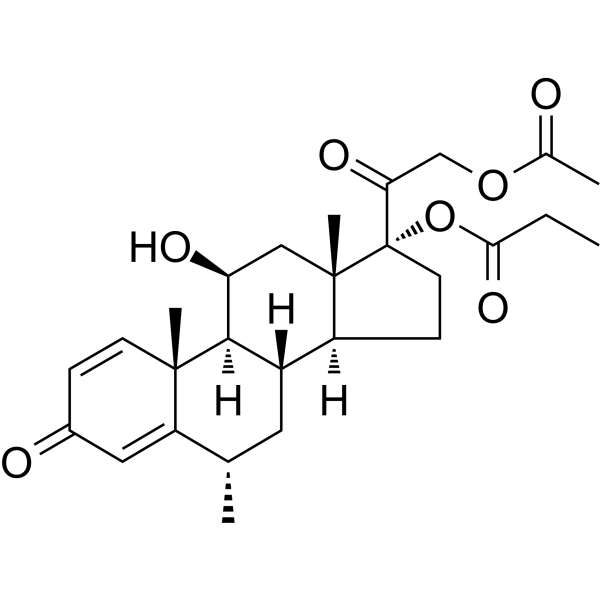
-
- HY-156622
-
|
HMC-C-01-A; MBS2320
|
Mitochondrial Metabolism
|
Cancer
|
|
Leramistat (HMC-C-01-A; MBS2320) is a mitochondrial complex 1 inhibitor, involving in cell metabolism immune metabolism regulation. Leramistat also inhibits ATP production in Thp1 human monocytes (IC50: 0.63 μM). Leramistat inhibits atopic dermatitis and other skin diseases autoimmune diseases, inflammatory diseases, cancer; and also inhibits osteoclast mediated disease .
|
-
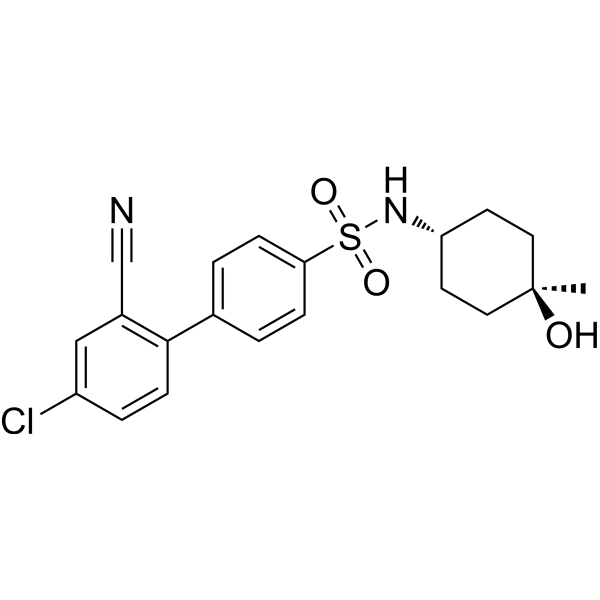
-
- HY-103018
-
|
ASN-002
|
JAK
Syk
|
Inflammation/Immunology
Cancer
|
|
Gusacitinib (ASN-002) is an orally active dual SYK/JAK kinase inhibitor with IC50 values of 5, 46, 4, 11 and 8 nM for SYK, JAK1, JAK2, JAK3 and TYK2, respectively. Gusacitinib rapidly and significantly suppressed key inflammatory pathways implicated in atopic dermatitis pathogenesis. Gusacitinib can be used in the research of chronic hand eczema and cancers such as basal cell carcinoma .
|
-

-
- HY-103018A
-
|
ASN-002 hydrochloride
|
JAK
Syk
|
Inflammation/Immunology
Cancer
|
|
Gusacitinib (ASN-002) hydrochloride is an orally active dual SYK/JAK kinase inhibitor with IC50 values of 5, 46, 4, 11 and 8 nM for SYK, JAK1, JAK2, JAK3 and TYK2, respectively. Gusacitinib hydrochloride rapidly and significantly suppressed key inflammatory pathways implicated in atopic dermatitis pathogenesis. Gusacitinib hydrochloride can be used in the research of chronic hand eczema and cancers such as basal cell carcinoma .
|
-
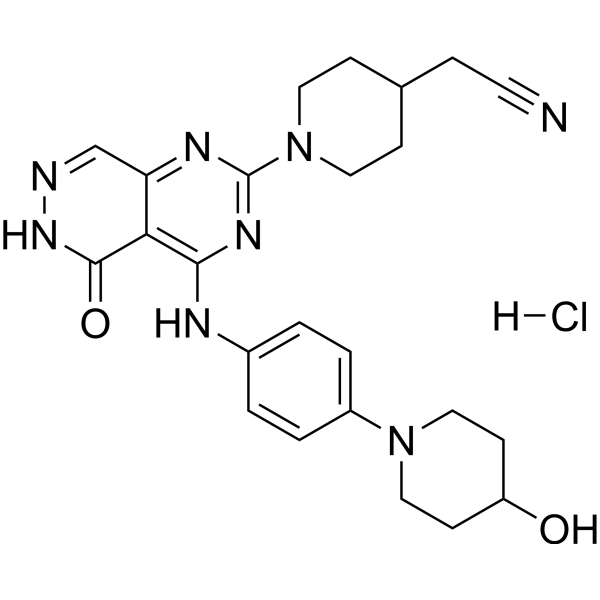
-
- HY-162004
-
|
|
NF-κB
Toll-like Receptor (TLR)
|
Inflammation/Immunology
|
|
NF-κB-IN-14 (compound 5e) significantly inhibits nitric oxide production in LPS-induced macrophages (IC50: 6.4 μM). NF-κB-IN-14 disrupts the TLR4-MyD88 protein interaction, leading to the suppression of the NF-κB signaling pathway suppression. NF-κB-IN-14 reduces ear edema and inflammation in an atopic dermatitis mouse model .
|
-
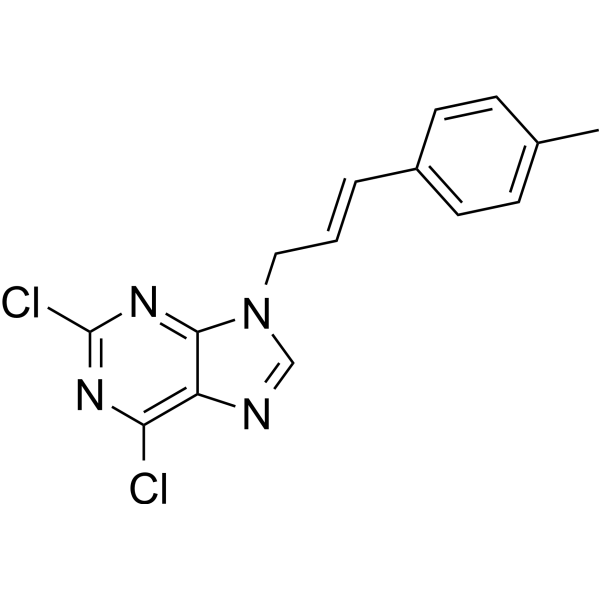
-
- HY-B0688S1
-
|
4,4′-Diaminodiphenyl sulfone-d4; DDS-d4
|
Antibiotic
Parasite
Bacterial
Reactive Oxygen Species
|
Infection
Inflammation/Immunology
|
|
Dapsone-d4 is the deuterium labeled Dapsone. Dapsone (4,4′-Diaminodiphenyl sulfone) is an orally active and blood-brain penetrant sulfonamide antibiotic with bacteriostatic, antimycobacterial and antiprotozoal activities[1]. Dapsone exerts effective antileprosy activity and inhibits folate synthesis in cell extracts of M. leprae. Dapsone is used for dermatologic disorder research, including leprosy, dermatitis herpetiformis, acne vulgaris et al[2][3].
|
-

-
- HY-126252
-
|
|
ROR
Interleukin Related
|
Inflammation/Immunology
|
|
A-9758 is a RORγ ligand and a potent, selective RORγt inverse agonist (IC50=5 nM), and exhibits robust potency against IL-17A release. A-9758 is effective in suppressing both Th17 differentiation and Th17 effector function. A-9758 significantly attenuates IL-23 driven psoriasiform dermatitis and is effective in blocking skin and joint inflammation .
|
-
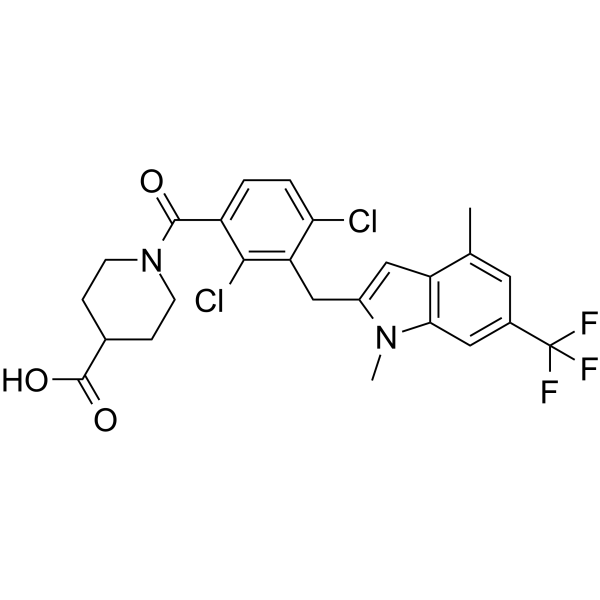
-
- HY-B0688S2
-
|
4,4′-Diaminodiphenyl sulfone-13C12; DDS-13C12
|
Isotope-Labeled Compounds
Antibiotic
Parasite
Bacterial
Reactive Oxygen Species
|
Infection
Inflammation/Immunology
|
|
Dapsone- 13C12 is the 13C12 labeled Dapsone (HY-B0688). Dapsone (4,4′-Diaminodiphenyl sulfone) is an orally active and blood-brain penetrant sulfonamide antibiotic with bacteriostatic, antimycobacterial and antiprotozoal activities. Dapsone exerts effective antileprosy activity and inhibits folate synthesis in cell extracts of M. leprae. Dapsone is used for dermatologic disorder research, including leprosy, dermatitis herpetiformis, acne vulgaris et al .
|
-

-
- HY-A0015
-
|
|
Histamine Receptor
|
Inflammation/Immunology
Endocrinology
|
|
Bepotastine besilate is a selective and orally active second-generation histamine H1 receptor antagonist, can suppress the expression of nerve growth factor (NGF). Bepotastine besilate has the potential for allergic rhinitis, allergic conjunctivitis and urticaria/pruritus research .
|
-
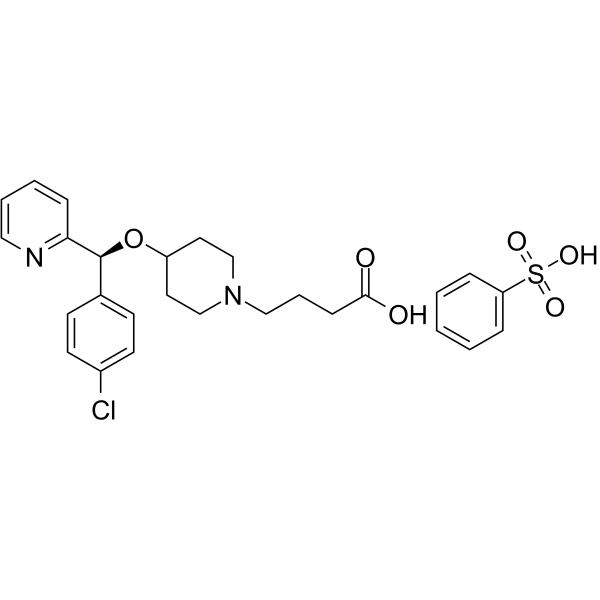
-
- HY-I0021
-
|
|
Histamine Receptor
|
Inflammation/Immunology
Endocrinology
|
|
Bepotastine is a selective and orally active second-generation histamine H1 receptor antagonist, can suppress the expression of nerve growth factor (NGF). Bepotastine has the potential for allergic rhinitis, allergic conjunctivitis and urticaria/pruritus research .
|
-
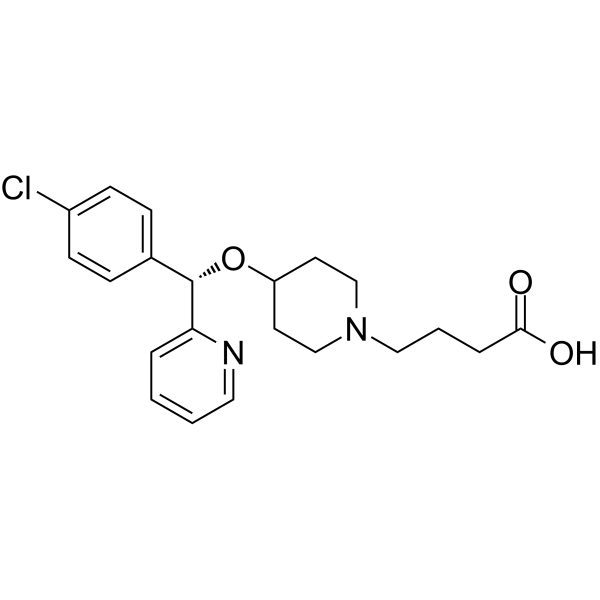
- HY-I0021A
-
|
|
Histamine Receptor
|
Inflammation/Immunology
Endocrinology
|
|
Bepotastine tosylate is a selective and orally active second-generation histamine H1 receptor antagonist. Bepotastine tosylate can suppress the expression of nerve growth factor (NGF). Bepotastine tosylate can be used in studies of allergic rhinitis, allergic conjunctivitis and urticaria/pruritus .
|
-
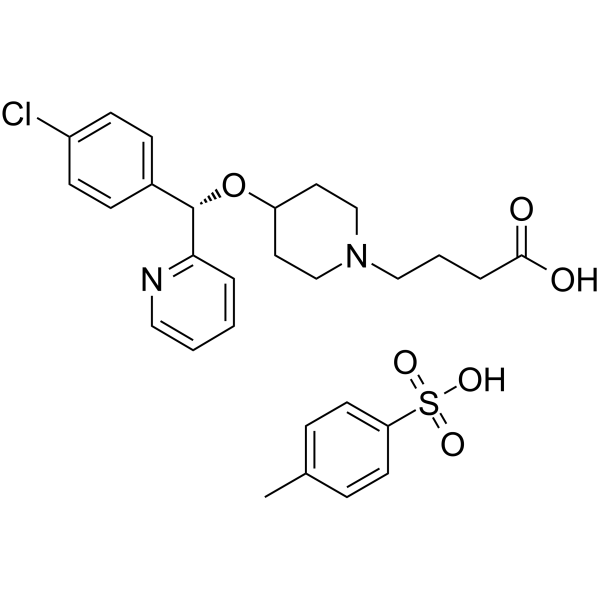
- HY-A0015A
-
|
|
Others
|
Inflammation/Immunology
Endocrinology
|
|
(Rac)-Bepotastine (besilate) is the isomer of Bepotastine (besilate) (HY-A0015), and can be used as an experimental control. Bepotastine besilate is a selective and orally active second-generation histamine H1 receptor antagonist, can suppress the expression of nerve growth factor (NGF). Bepotastine besilate has the potential for allergic rhinitis, allergic conjunctivitis and urticaria/pruritus research .
|
-
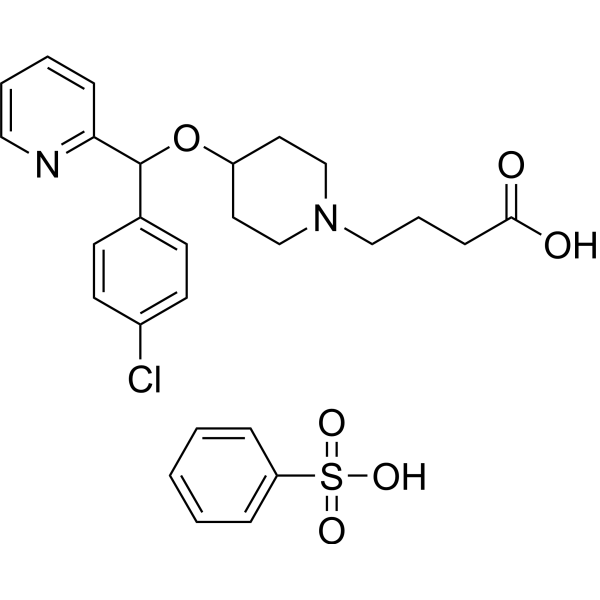
- HY-B0725
-
|
|
Histamine Receptor
Cytochrome P450
|
Neurological Disease
Cancer
|
|
Doxepin hydrochloride is an orally active tricyclic antidepressant agent. Doxepin hydrochloride is a potent and selective histamine receptor H1 antagonist. Doxepin hydrochloride is also a potent CYP450 inhibitor and significantly inhibits CYP450 2C19 and 1A2 . Doxepin inhibits reuptake of serotonin and norepinephrine as a tricyclic antidepressant .. Doxepin has therapeutic effects in atopic dermatitis,chronic urticarial,can improve cognitive processes, protect central nervous system .. Doxepin has also been proposed as a protective factor against oxidative stress ..
|
-
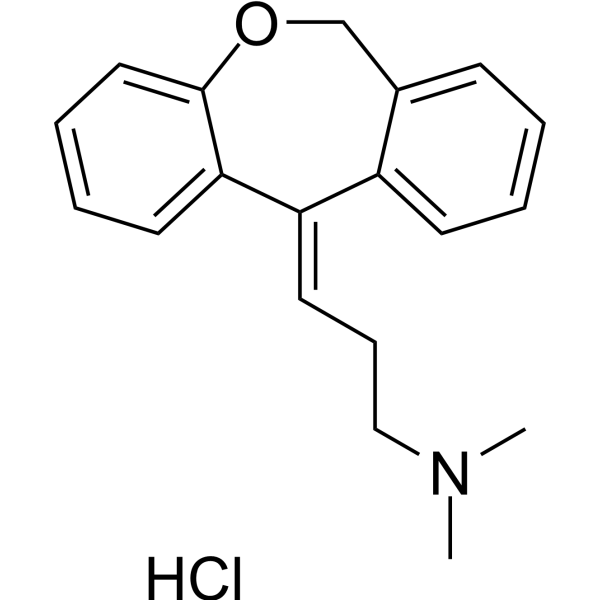
- HY-B0725R
-
|
|
Histamine Receptor
Cytochrome P450
|
Neurological Disease
Cancer
|
|
Doxepin (Hydrochloride) (Standard) is the analytical standard of Doxepin (Hydrochloride). This product is intended for research and analytical applications. Doxepin hydrochloride is an orally active tricyclic antidepressant agent. Doxepin hydrochloride is a potent and selective histamine receptor H1 antagonist. Doxepin hydrochloride is also a potent CYP450 inhibitor and significantly inhibits CYP450 2C19 and 1A2 . Doxepin inhibits reuptake of serotonin and norepinephrine as a tricyclic antidepressant .. Doxepin has therapeutic effects in atopic dermatitis,chronic urticarial,can improve cognitive processes, protect central nervous system .. Doxepin has also been proposed as a protective factor against oxidative stress ..
|
-
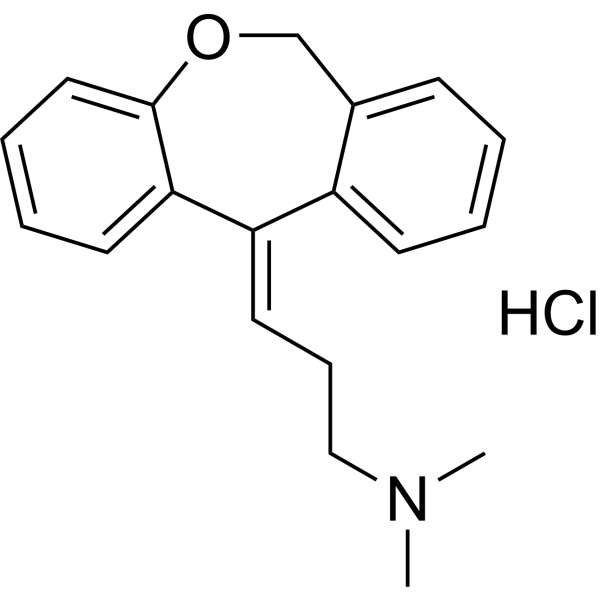
- HY-A0077
-
-

- HY-A0077A
-
-

- HY-13723
-
|
SDZ-ASM 981
|
Phosphatase
|
Inflammation/Immunology
|
|
Pimecrolimus (SDZ-ASM 981) is a potent, nonsteroid and orally active calcineurin inhibitor with a Ki of 117 nM. Pimecrolimus shows anti-inflammatory activity .
|
-
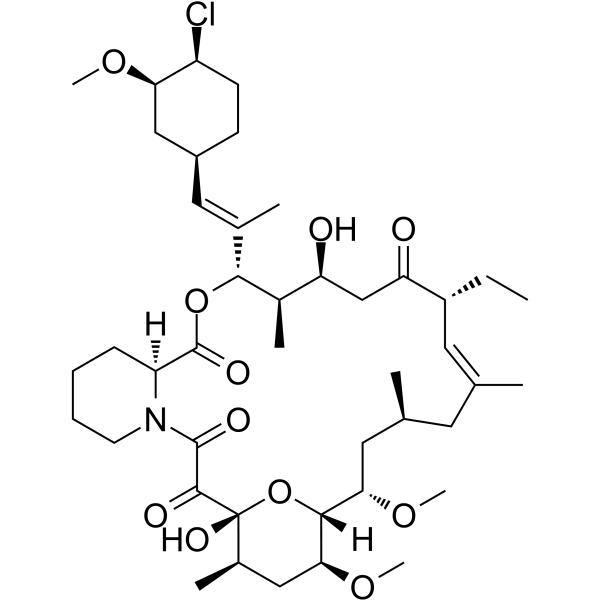
| Cat. No. |
Product Name |
Type |
-
- HY-156263
-
|
Luria-Bertani Base
|
Biochemical Assay Reagents
|
|
LB Broth Base, powder (Luria-Bertani Base) is generally used to maintain the growth of E. coli. The composition of 1 liter of LB medium is: 10 g peptone, 5 g yeast extract and 5 g NaCl .
|
| Cat. No. |
Product Name |
Target |
Research Area |
-
- HY-P1722
-
|
|
Neurokinin Receptor
|
Inflammation/Immunology
|
|
Spantide II, an undecapeptide substance P (SP) analog, is a potent neurokinin-1 receptor (NK-1R) antagonist. Spantide II binds with NK-1R and blocks proinflammatory activities associated with SP. Spantide II can be used in the research of inflammatory skin disorders, such as psoriasis and contact dermatitis .
|
| Cat. No. |
Product Name |
Target |
Research Area |
-
- HY-P99301
-
|
Anti-Canine IL31 Recombinant Antibody
|
Interleukin Related
|
Inflammation/Immunology
|
|
Lokivetmab (Anti-Canine IL31 Recombinant Antibody) is an anti-canine IL-31 monoclonal antibody that can be used for the research of atopic dermatitis (AD) in dogs .
|
-
- HY-P99053
-
|
|
Interleukin Related
|
Inflammation/Immunology
|
|
Tralokinumab, a fully human IgG4 monoclonal antibody, specifically binds with high affinity to IL-13 alone, preventing its interaction with the receptor and subsequent downstream signalling. Tralokinumab can be used for the research of the atopic dermatitis (AD) .
|
-
- HY-P99162
-
|
CIM331
|
Interleukin Related
|
Inflammation/Immunology
|
|
Nemolizumab (CIM331) is a humanized antihuman interleukin-31 receptor A monoclonal antibody that inhibits the binding of interleukin-31 (IL-31) to its receptor and subsequent signal transduction. Nemolizumab can used be in research of atopic dermatitis (AD) .
|
-
- HY-P99434
-
|
KY1005; SAR445229
|
Inhibitory Antibodies
|
Inflammation/Immunology
|
|
Alvircept sudotox is an anti-OX40 Ligand (OX40L) monoclonal antibody (mAb). Alvircept sudotox inhibits OX40-OX40L interaction, and can be used in the research of atopic dermatitis .
|
-
- HY-P99955
-
|
AMG 451; KHK4083
|
Inhibitory Antibodies
|
Infection
Inflammation/Immunology
|
|
Rocatinlimab (AMG 451) (KHK4083) is a fully human, non-fucosylated, immunoglobulin G1 (IgG1) anti-OX40 monoclonal antibody. Rocatinlimab can be used for the research of atopic dermatitis (AD) .
|
-
- HY-P99519
-
|
KPL-716
|
Interleukin Related
|
Inflammation/Immunology
|
|
Vixarelimab (KPL-716) is a human anti-oncostatin M (OSM) monoclonal antibody that binds to the beta chain of the OSM receptor and inhibits IL-31 and OSM signalling. Vixarelimab can be used in studies of inflammatory skin diseases such as atopic dermatitis and itchy nodular rash .
|
-
- HY-P99018
-
|
Antibody ANB 020
|
Interleukin Related
|
Cancer
|
|
Etokimab (Antibody ANB 020) is a humanized monoclonal antibody that targets IL-33. Etokimab can be used for the research of atopic dermatitis .
|
-
- HY-P9926
-
|
REGN-668; SAR-231893
|
Interleukin Related
|
Inflammation/Immunology
Cancer
|
|
Dupilumab (REGN-668) is a fully human mAb to IL-4 receptor α (IL-4Rα) that inhibits both IL-4 and IL-13 signaling, markedly improved moderate-to-severe atopic dermatitis .
|
-
- HY-P99673
-
|
REGN-3500; SAR-440340
|
Interleukin Related
NF-κB
|
Inflammation/Immunology
|
|
Itepekimab (REGN-3500) is an IgG4 monoclonal antibody against IL-33. Itepekimab reduced airway inflammation and related tissue damage in preliminary clinical studies. Itepekimab has potential effects in asthma, chronic obstructive pulmonary disease (COPD), and atopic dermatitis (AD) .
|
| Cat. No. |
Product Name |
Category |
Target |
Chemical Structure |
| Cat. No. |
Product Name |
Chemical Structure |
-
- HY-B0688S1
-
|
|
|
Dapsone-d4 is the deuterium labeled Dapsone. Dapsone (4,4′-Diaminodiphenyl sulfone) is an orally active and blood-brain penetrant sulfonamide antibiotic with bacteriostatic, antimycobacterial and antiprotozoal activities[1]. Dapsone exerts effective antileprosy activity and inhibits folate synthesis in cell extracts of M. leprae. Dapsone is used for dermatologic disorder research, including leprosy, dermatitis herpetiformis, acne vulgaris et al[2][3].
|
-

-
- HY-B0688S2
-
|
|
|
Dapsone- 13C12 is the 13C12 labeled Dapsone (HY-B0688). Dapsone (4,4′-Diaminodiphenyl sulfone) is an orally active and blood-brain penetrant sulfonamide antibiotic with bacteriostatic, antimycobacterial and antiprotozoal activities. Dapsone exerts effective antileprosy activity and inhibits folate synthesis in cell extracts of M. leprae. Dapsone is used for dermatologic disorder research, including leprosy, dermatitis herpetiformis, acne vulgaris et al .
|
-

Your information is safe with us. * Required Fields.
Inquiry Information
- Product Name:
- Cat. No.:
- Quantity:
- MCE Japan Authorized Agent:

































































